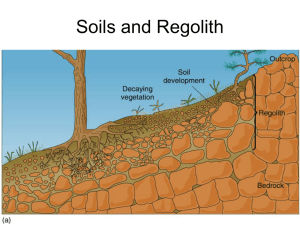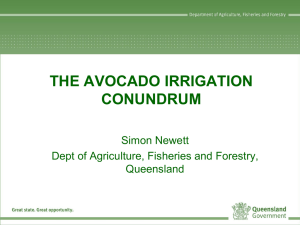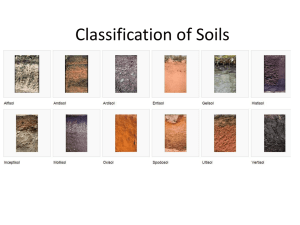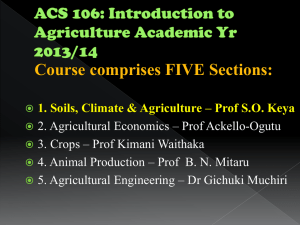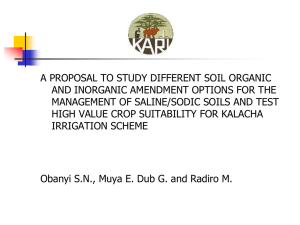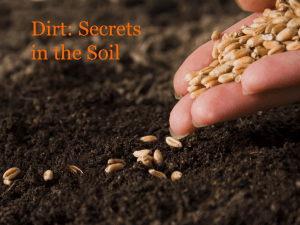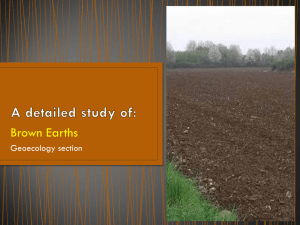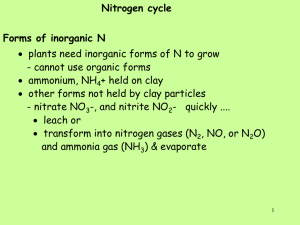Avocado Irrigation
advertisement
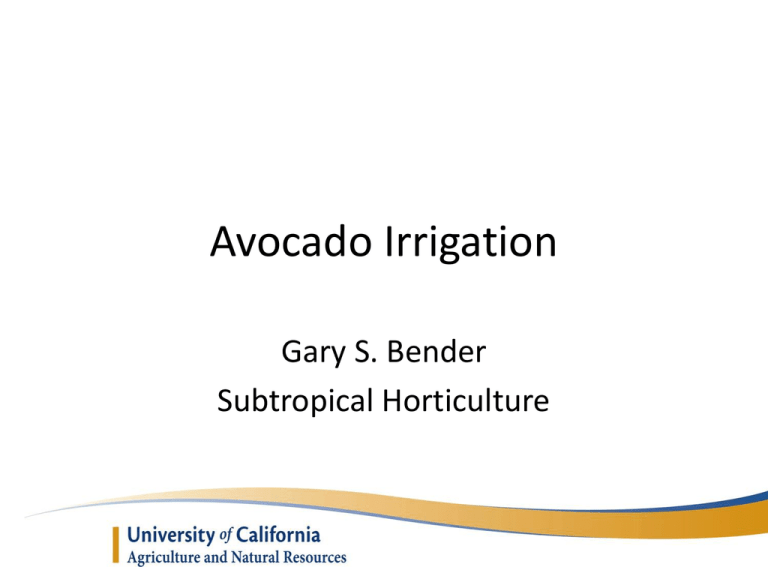
Avocado Irrigation Gary S. Bender Subtropical Horticulture Special Challenges in Avocado Irrigation • 80-90% of the feeder root length is located in the upper 8 inches of the soil profile • Inefficient at absorbing water (few root hairs) • Many of the groves are located on steep hillsides with decomposed granite soil, this drains rapidly but doesn’t store water well • Avocados are heavy water users, water is expensive, most people irrigate less than is required for optimum yields Special Challenges in Avocado Irrigation • There must be some over-irrigation periodically to leach salts out of the soil • If leaching is not done, chloride-caused tipburn will result, eventually reducing yields Reasons for Watering • Photosynthesis to create carbohydrates • All secondary reactions • Transportation medium for fertilizer salts • Fills the plant and maintains plant stucture • Cooling • Leaching of salts in the soil Irrigation Scheduling • The most important cultural operation in the grove • Need to know both frequency of irrigation and how much water to apply during an irrigation event Frequency • Irrigate when 30% of soil moisture is lost (decomposed granite soils) or when 50% of soil moisture is lost (clay soils) • Therefore, you must check soil moisture content – Shovel – Tensiometer 30% moisture depletion = 20 cb reading on the instrument (in coarse soils) – Gypsum blocks (WaterMarks) (do not read well from 0-10 cb) – Portable electrical meters (some work well, but the tips are sensitive to cracking and breaking in rocky soils Tensiometers • Must be within the wetted area of the minisprinkler or dripper • Should be placed 2-3 feet away from the sprinkler on the contour of the hill • Set one tensiometer 8” below the soil surface (in d.g. soils) • Set another tensiometer 20” deep (this helps to know when to turn off the water usually at 10cb, or to irrigate for a longer period of time if it remains too dry) Tensiometers • Maintain them on a regular basis – Fill with water – Pump out air bubbles – Replace cork once a year • Protect them from the pickers • If the soil gets too dry (tensiometer reads 80), the clay cup breaks tension from the soil and you need to pull it out, fill it and re-pump it Measuring Soil Moisture – Simple and Cheap Methods • Tensiometers – Labor intensive to collect data – Requires regular maintenance – Can be inaccurate in extremely wet or dry soils – Not accurate in very sandy soils – Indicates when to apply, not how much to apply Simple (and sort of cheap devices) • Gyspsum blocks – Labor intensive to collect data – Needs a digital meter – Can be inaccurate in extremely wet or dry soils – Indicates when to irrigate, not how much – May only last 18 months due to breakdown of gypsum More Expensive Methods • Capacitance probes – Measure change in dielectric constant in the soil • Neutron probes – Used only by researchers and irrigation consultants How Much to Irrigate • Use CIMIS to determine how much water a tree is using on a daily basis • Eto x Kc = Etc – Divide this by the distribution uniformity (du) – If du is 1, that means you have every sprinkler putting out the exact same amount of water – Average du is 0.8 • When it is time to irrigate (as indicated by your tensiometer) apply the amount per day times the days between irrigations • Add 10% amount for leaching of salts Things to Remember • Avocados use water all year long. If it rains in the winter, calculate “effective” rainfall, extra rain is lost by gravity and run-off • Water use changes constantly according to temperature, light, humidity, and wind. Setting a timeclock is dangerous because it encourages you not to re-set it each week Things to Remember • Water use changes according to the number of leaves • Control weeds – they also use water • Historical water tables are somewhat useful, but dangerous. (the weather changes a lot!) Soils and Irrigation • Irrigation water requirement is driven by the weather, not the soil type. Soil is important, however, because soil stores the water. • Sandy soils (coarse soils) hold less water than clay soils. Thus trees on sandy soils need to by irrigated more often. Parts of an Irrigation System 1. 2. 3. 4. 5. 6. 7. 8. 9. 10. 11. 12. 13. Pump and motor (if you have a well) Water meter (if you are on district water) See Table 7 for water meter capacity Reduced pressure (RP) backflow device Main valve Bermad valve or electrically operated valve Flowmeter and pressure gauges Air-vacuum relief valves Injection equipment Filter Sub-main valves to various parts of the grove Pressure regulators (usually pre-set) Emitters Your feet in the grove to “walk the lines” Water Supply • Avocado is the most sensitive tree crop to salts in water (of all the commercially grown varieties of fruits and nuts in California) • What about the Ec of water? – no loss in yield = Ec 0.9 – 10% loss in yield = Ec 1.2 – 25% loss in yield = Ec 1.7 – 50% loss in yield = Ec 2.4 – From R. S. Ayers, Journal of Irrigation and Drainage, ASCE Vol. 103, June 1977 Reclaimed Water? • In one five year trial in Escondido, reclaimed water reduced (EC=1.5) yield by 40% compared to district water (EC=0.7) • Many wells in San Diego have EC of 1.2-1.7) Chloride Tip Burn on Avocado What does Salinity do to Avocado? 1. Osmotic potential in soil increases, making it difficult for roots to extract water from soil. 1. 2. Water may leave the roots, even during an irrigation This would happen at an EC = 4 2. Sodium may accumulate in soil replacing calcium and magnesium, destroying soil structure. 3. Chloride uptake causes “tip-burn” in leaves. These leaves must drop and be replaced. Tree focuses energy on leaf replacement and not flowering and fruiting Furrow Irrigation of Avocados in Riverside (a thing of the past!)
